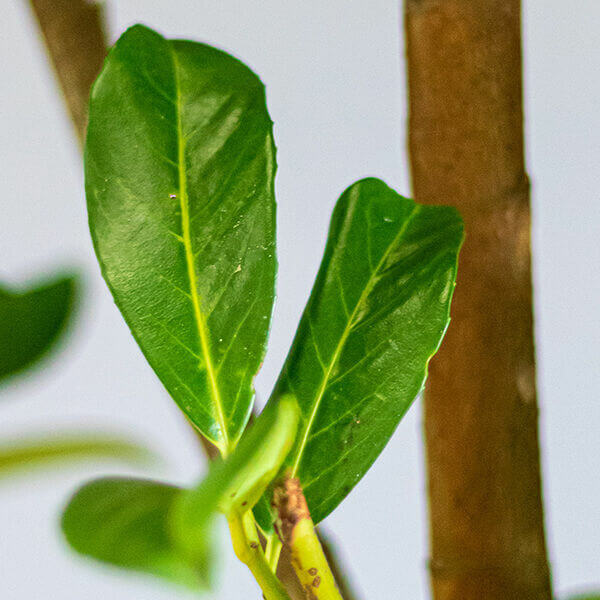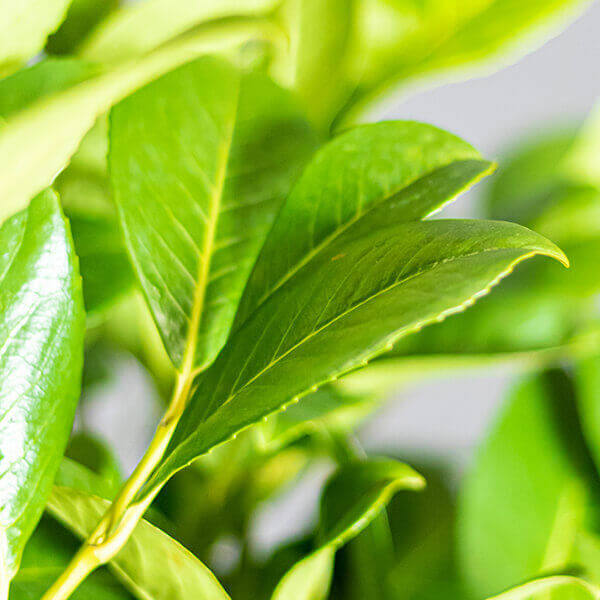Hedging Plants For Wildlife Friendly Gardens
Hedging Plants For Wildlife Friendly Gardens
Blog Article
Hedge Plants For Beautiful Borders
Enhance your garden's attraction with lush hedge ranges such as Yew (Taxus), Thuja, Laurel, Photinia, and Bamboo, celebrated for their structural stability and environmental benefits.
Yew and Thuja supply evergreen coverage and winter season resilience, while Laurel provides fast development and broad, fragrant leaves.
Photinia includes seasonal beauty with its vibrant red foliage, and Bamboo provides a low-maintenance, peaceful atmosphere.
These hedges improve air quality, decrease sound, and produce tranquil, personal areas.
Correct planting, spacing, and upkeep guarantee energetic development and eco-friendly consistency.
Explore how these rich varieties can raise your garden's charm and well-being.
Secret Takeaways
Transform Your Garden With Lush Hedge Ranges
- Select Yew for its thick, evergreen development and unequaled longevity.
- Select Laurel for its quick development and broad leaves, guaranteeing fast personal privacy.
- Pick Photinia for its vibrant seasonal foliage, which turns a striking dark red.
- Utilize Bamboo for a low-maintenance, winter-hardy hedge with aesthetic appeal.
- Space plants 2-3 per meter and prune routinely for optimum development and health.
Popular Hedge Plants
When changing a garden with lavish hedge varieties, it's vital to think about popular hedge plants such as Yew, Thuja, Laurel, and Photinia due to their special attributes and advantages.
Yew (Taxus) is highly esteemed for its longevity and dense, green development, making it a prime option for sustaining landscapes.
Thuja is kept in mind for its evergreen foliage and robust winter strength.
Photinia includes seasonal vibrancy with red leaves that darken gradually, developing vibrant visual appeal.
Laurel uses quick development and aromatic, broad leaves, suitable for fast personal privacy.
In Addition, Bamboo is an excellent option for atmosphere, providing a low-maintenance, winter-hardy choice that improves the garden's aesthetic with its elegant, swaying canes.
These selections deal with a variety of horticultural needs and choices.
Advantages of Garden Hedges
Garden hedges provide a multitude of benefits, making them an important addition to any landscape. These natural barriers are cost-efficient to carry out and offer significant wind defense, boosting air circulation and contributing to noise decrease. The thick foliage of hedges like Thuja and Beech guarantees privacy by blocking exposure, developing a tranquil and remote environment.
Hedges likewise play an essential function in microclimate policy, providing a steady environment that fosters plant development and reduces temperature level changes. Their intricate leaf structures filter contaminants, improving air quality and adding to a healthier garden community.
Additionally, hedges master noise reduction, soaking up and deflecting sound waves to lower ambient sound levels. This dual performance of supplying both visual and acoustic personal privacy improves the total tranquility and visual appeal of any garden.
Planting and Upkeep Tips
For a successful hedge, meticulous preparation of the planting area is essential. Make sure the soil has proper pH and drainage to support strong root development.
Space the plants appropriately for the picked species. Water the hedge often during its preliminary development phase, changing as required with seasonal modifications.
Implement a methodical insect control and disease prevention technique, utilizing natural or chemical treatments when essential. Frequently check for aphids, mites, and fungal infections.
Apply mulch to maintain moisture and suppress weeds. Seasonal pruning promotes thick development and air flow, vital for plant health.
Following these guidelines will help you cultivate a lively, properly maintained hedge that enhances the charm of your garden.
Spacing and Cutting Standards
Spacing and Cutting Guidelines
Proper spacing and cutting are crucial for cultivating healthy, visually appealing hedges. Appropriate spacing makes sure each plant gets adequate nutrients, light, and air flow.
Follow these guidelines for optimal hedge maintenance:
- Spacing: Position hedge plants 2-3 plants per meter to encourage robust development.
- Pruning Strategies: Routine pruning is necessary for keeping wanted hedge height and shape. Cut brand-new development in summer season and cut back older wood throughout winter season.
- Seasonal Care: Change cutting techniques and schedules according to seasonal requirements to guarantee plant health.
- Hedge Height: Routinely monitor and trim to keep the wanted hedge height and accomplish uniform visual appeals.
Abiding by these steps will ensure your hedge prospers, improving both the appeal and functionality of your garden.
Choosing the Right Hedge
Choosing the Right Hedge
Selecting the proper hedge includes assessing factors such as fully grown height, foliage density, and environmental resilience. Effective hedge plant choice needs understanding each species' development qualities and site-specific adaptability.
For instance, Yew (Taxus) offers exceptional longevity and dense development, while Thuja is significant for its winter season resilience. Additionally, considering upkeep requirements is vital; fast-growing species like Laurel or Privet demand routine trimming, whereas low-maintenance alternatives like Bamboo or Ivy might be preferable for those looking for minimal maintenance.
Environmental elements such as soil type, light availability, and wetness conditions should also assist the selection process. This careful method ensures the selected hedges will grow, offering both visual and functional benefits to the garden landscape.
Delivery and Planting Advice
To guarantee your hedge plants grow, they should be provided by specialized couriers and planted without delay upon arrival.
Follow these essential steps for effective planting:
- Soil Preparation: Improve the soil with raw material to enhance drain and nutrient content.
- Planting Depth: Produce a trench two times the width and equivalent to the depth of the root ball.
- Watering Techniques: Water thoroughly after planting, keeping the soil consistently damp however not filled.
- Mulching: Apply a layer of mulch to keep wetness and reduce weeds.
Consumer Assistance and Service
Offered the important function of prompt assistance in horticultural pursuits, our customer support team is offered 6 days a week through telephone, e-mail, and social networks to use skilled suggestions and quickly resolve any issues. Their devotion to fast action times makes sure consumer complete satisfaction by resolving queries related to plant health, ideal planting techniques, and upkeep schedules.

Six days a week
Within 2 days
This extensive assistance system, reinforced by an excellent 9.3/ 10 customer rating, highlights our dedication to boosting the gardening experience for every client.
Often Asked Questions
How Long Does It Take for Hedge Plants to Develop?
Hedge plants usually need one to 3 years to end up being totally developed, with the exact duration varying by species and growing conditions.
Efficient care throughout this vital duration is vital for robust development. Consistent watering, vigilant weed control, and suitable fertilizer application are critical in promoting strong root development.
For example, fast-growing species like Laurel may develop faster, while slower-growing ranges such as Yew may take longer. Persistent maintenance accelerates the facility procedure, leading to dense and healthy hedges.
What Are the very best Hedge Plants for Personal Privacy?
The concern of the very best hedge plants for privacy involves evaluating evergreen and deciduous alternatives.
Evergreen hedges like Thuja, Laurel, and Cypress supply year-round coverage, ensuring constant personal privacy.
In contrast, deciduous hedges such as Beech offer seasonal personal privacy, shedding leaves in chillier months.
Key maintenance pointers for privacy hedges include routine cutting, fertilizing in spring, and proper spacing-- normally 2 to 3 plants per meter.
Furthermore, consistent watering and diligent weed elimination are essential for promoting healthy, thick growth.
Can Hedge Plants Attract Wildlife to My Garden?
Yes, hedge plants can bring in wildlife Article source to your garden by providing essential advantages like shelter, food, and nesting sites, therefore improving regional biodiversity. For example, yew, holly, and laurel are excellent for drawing in birds, while ivy supports a variety of bugs.
Nevertheless, it is essential to keep in mind that there are some disadvantages, such as increased upkeep to handle pests and routine upkeep. Carefully picking and preserving hedge ranges can assist balance these advantages and drawbacks, ultimately cultivating a sustainable and dynamic environment in your garden.
Are There Any Blooming Hedge Plants Available?
Yes, there are flowering hedge plants readily available that can enhance the appeal of your garden.
For instance, Elaeagnus, also called Olive Willow, produces aromatic white flowers in the fall, including a touch of elegance.
Photinia, another popular choice, showcases lively red leaves that grow into a rich green, creating a dynamic visual impact throughout the seasons.
To make sure these plants thrive, it's necessary to practice appropriate pruning strategies and seasonal upkeep, such as trimming new growth in the summer and cutting down in the winter season.
These measures will help maintain the health and aesthetic appeal of your flowering hedges.
How Do I Prevent Insects in My Hedge Plants?
To avoid bugs in hedge plants, use natural bug control approaches and maintain proper hedge care. Introduce advantageous bugs like ladybugs, which victimize damaging bugs, to create a well balanced community.
Frequently check your hedges for indications of problem and promptly remove any afflicted parts to avoid the spread. Guarantee the health of your hedges by applying balanced fertilizers and providing adequate water.
Use mulching to maintain soil wetness and appropriate spacing to decrease plant stress and promote robust development. These practices jointly help in lessening bug concerns and keeping a healthy hedge.
Conclusion
In essence, picking the ideal hedge ranges such as Yew, Thuja, and Laurel can change any garden into a serene sanctuary. These plants offer year-round plant, improve aesthetic appeal, and offer practical advantages like noise reduction and wind security.
Appropriate planting techniques, accurate spacing, consistent watering, and seasonal cutting are vital for optimal development.
Reputable delivery services and expert customer assistance ensure a seamless experience from purchase to planting, making it easier than ever to raise your outside space.
Garden hedges provide a plethora of benefits, making them a valuable addition to any landscape. These natural barriers are economical to carry out and supply substantial wind protection, improving air flow and contributing to noise reduction. The dense foliage of hedges like Thuja and Beech guarantees privacy by obstructing exposure, developing a peaceful and secluded environment.

Pruning Strategies: Routine pruning is vital for preserving wanted hedge height and shape. Cut brand-new growth in summer season and cut back older wood throughout winter.
Report this page